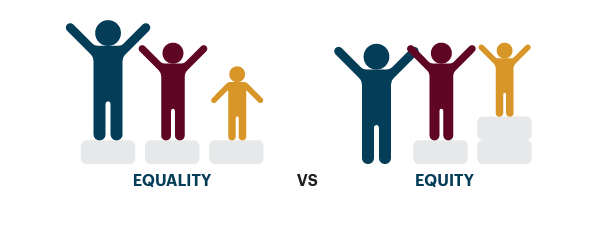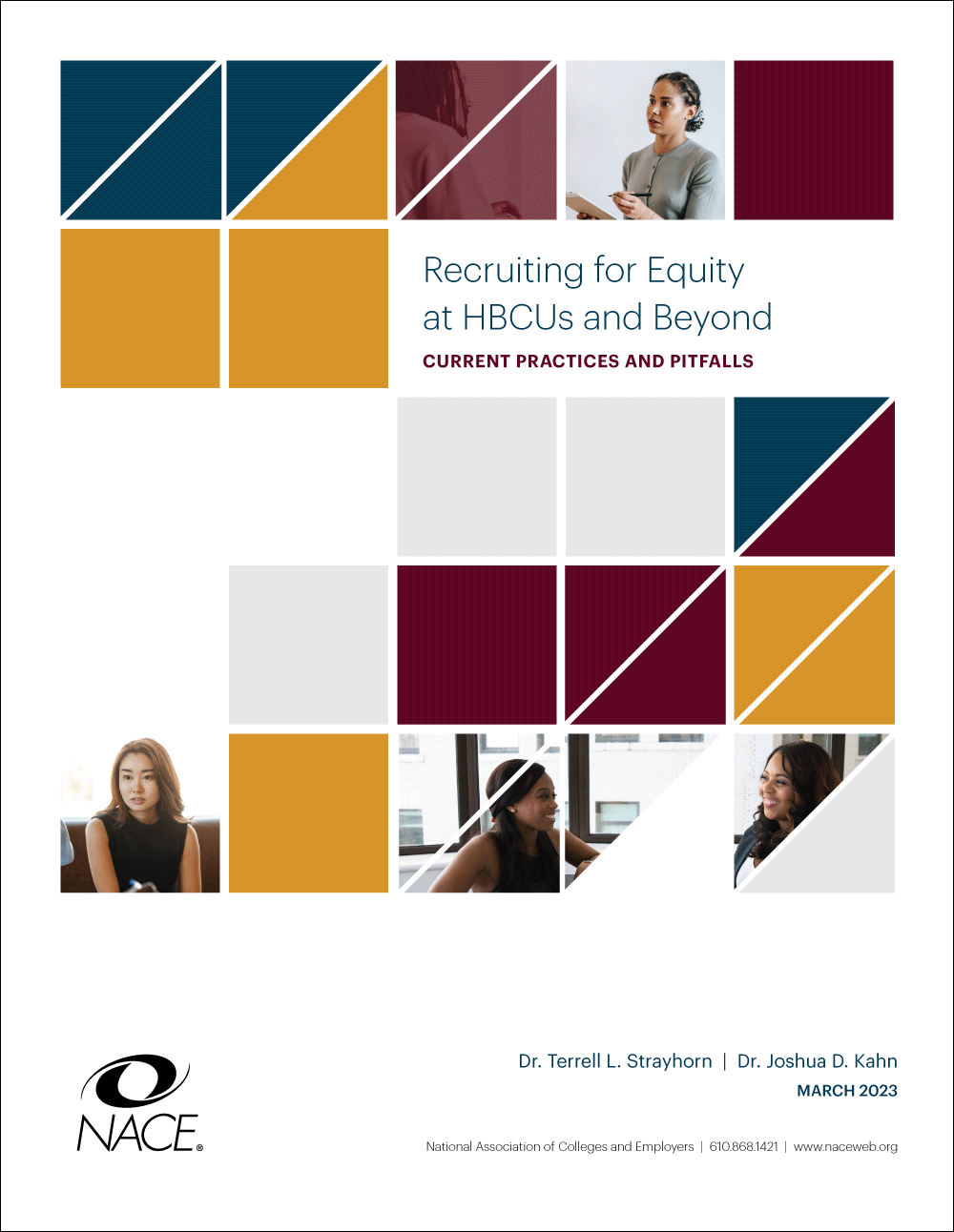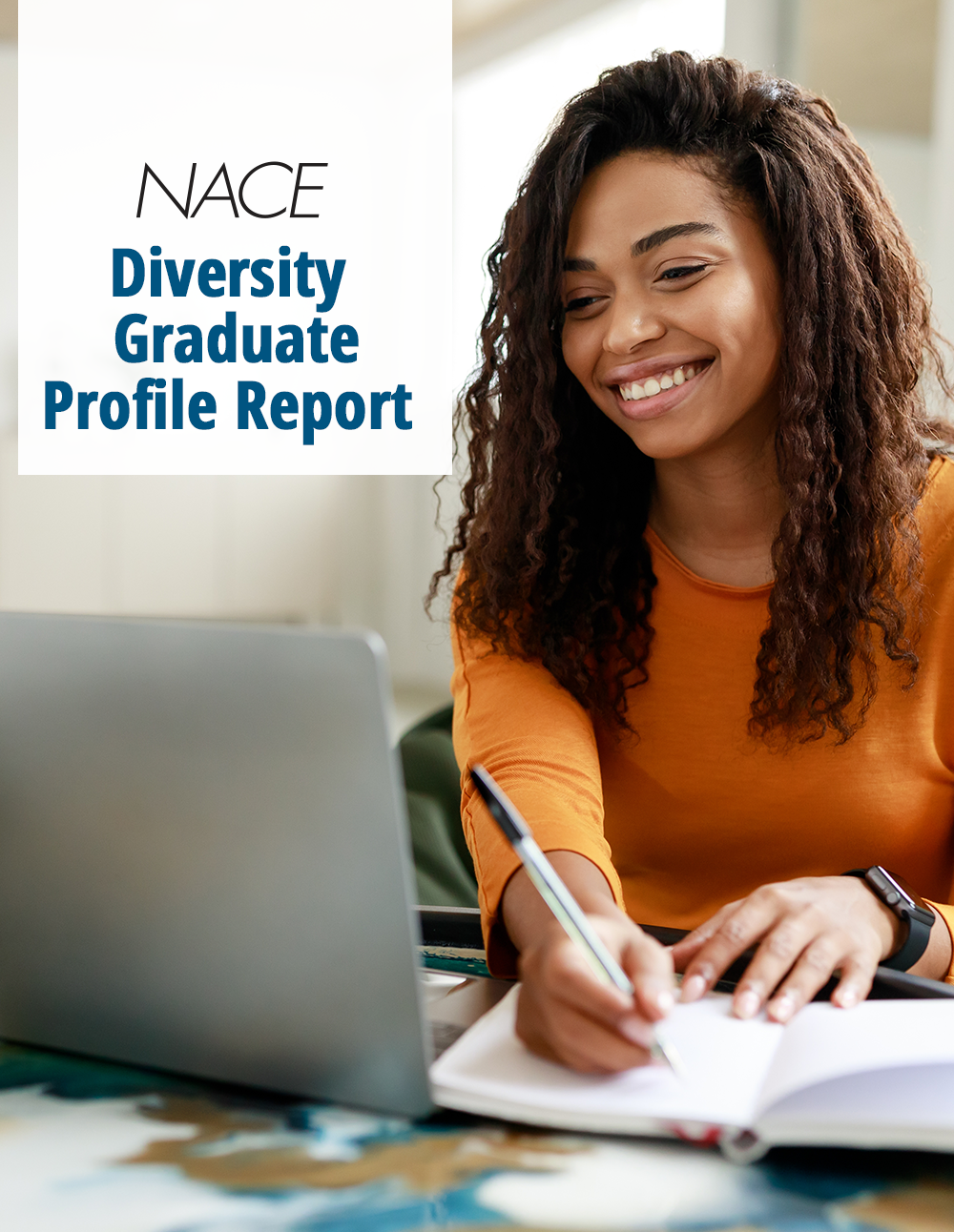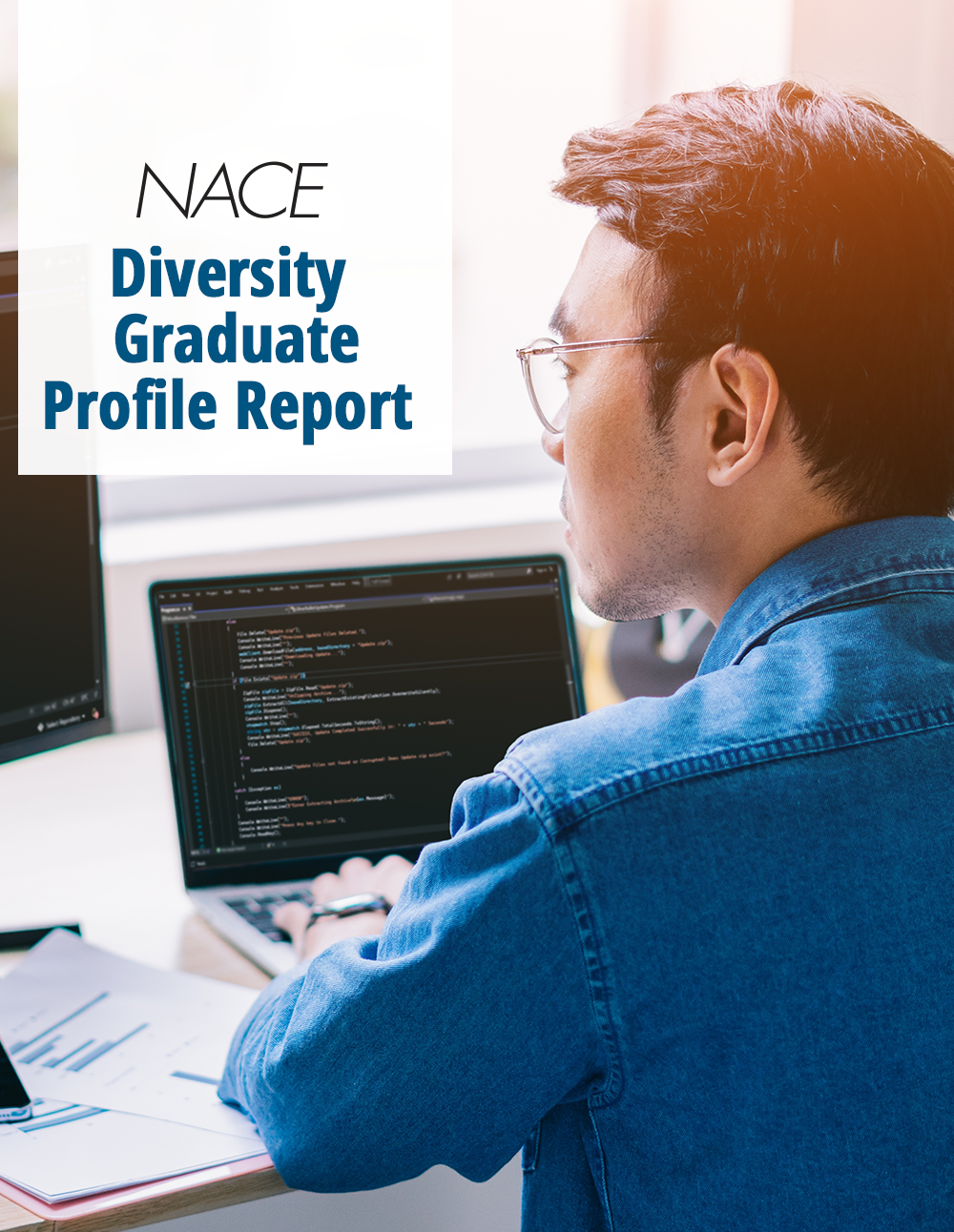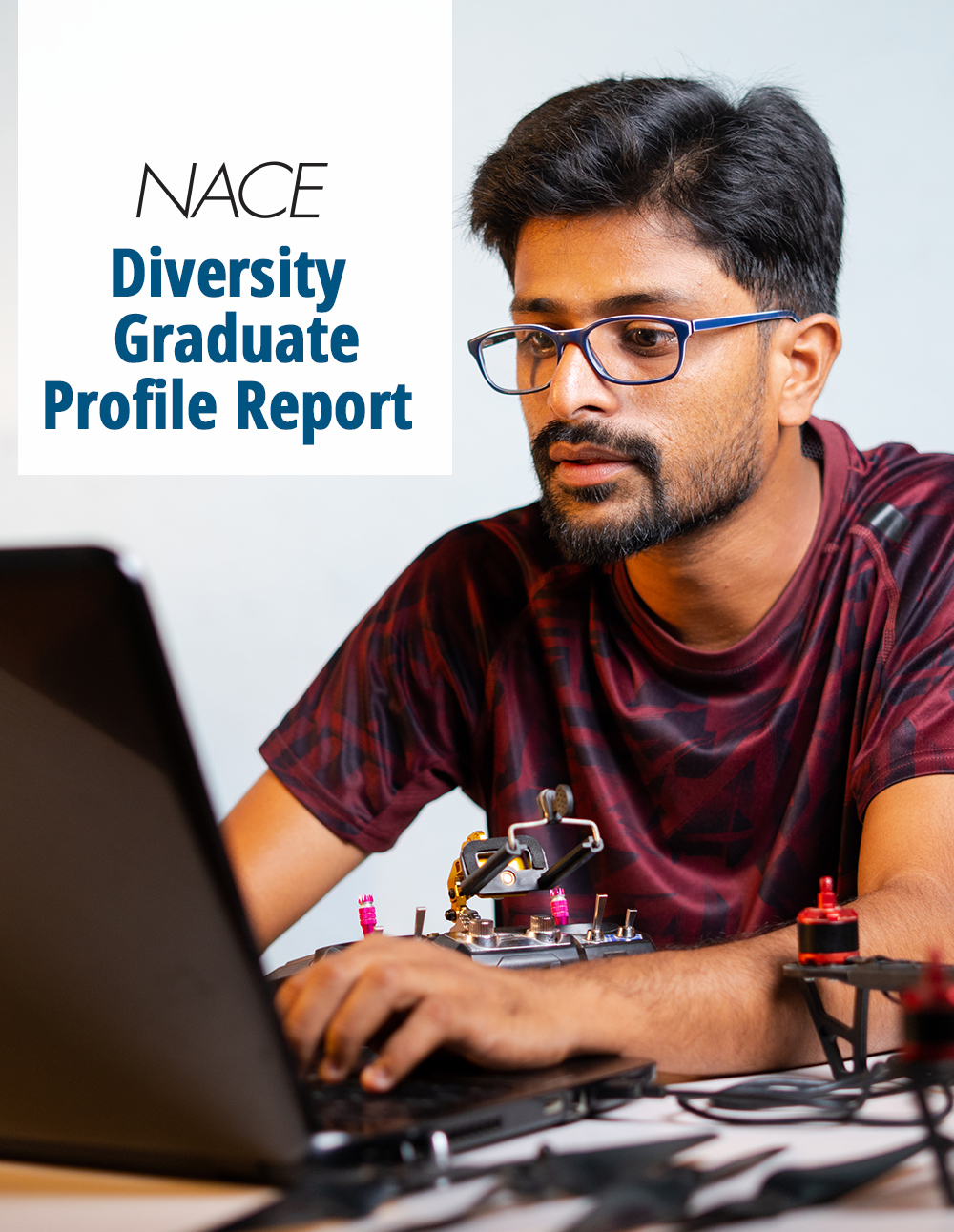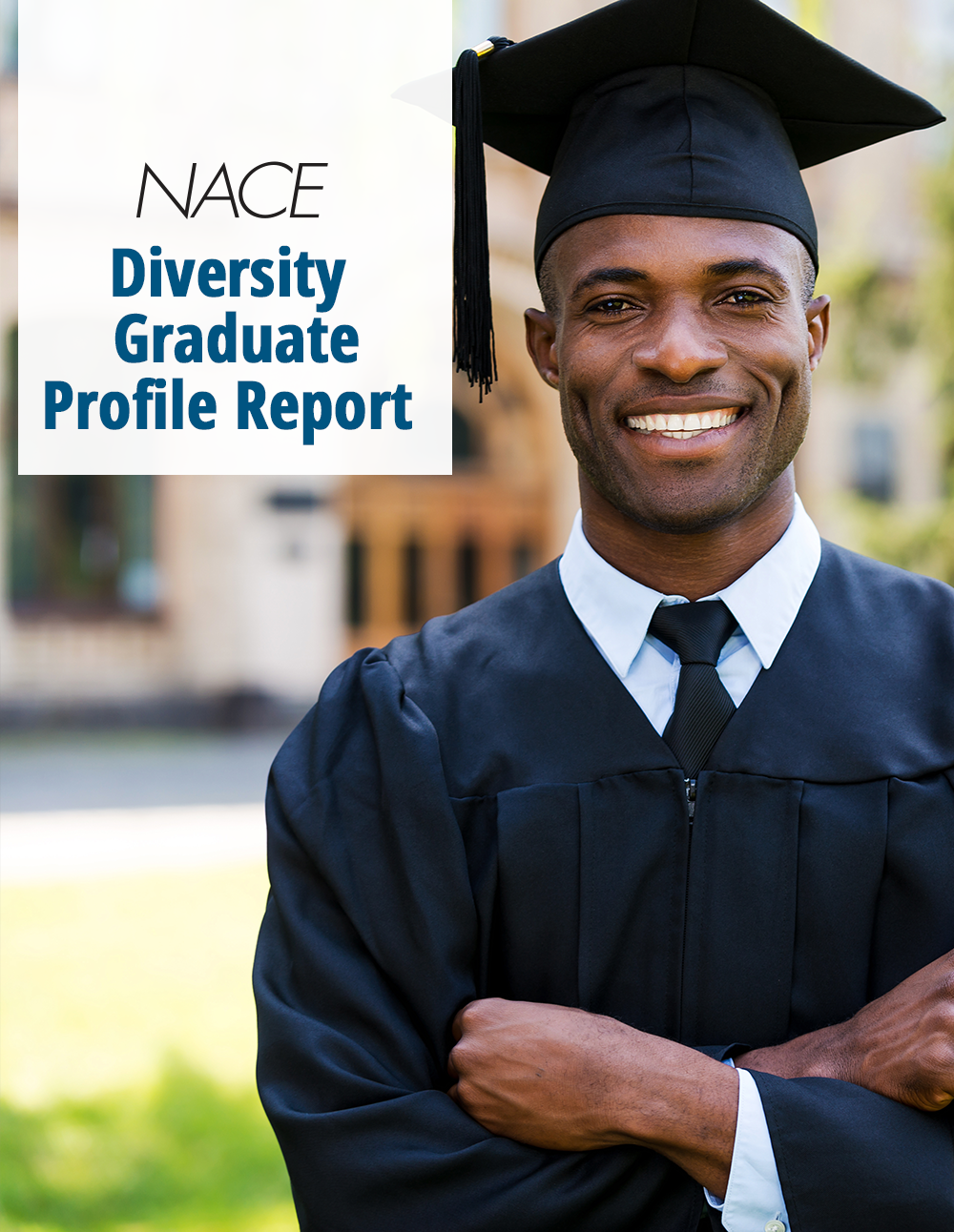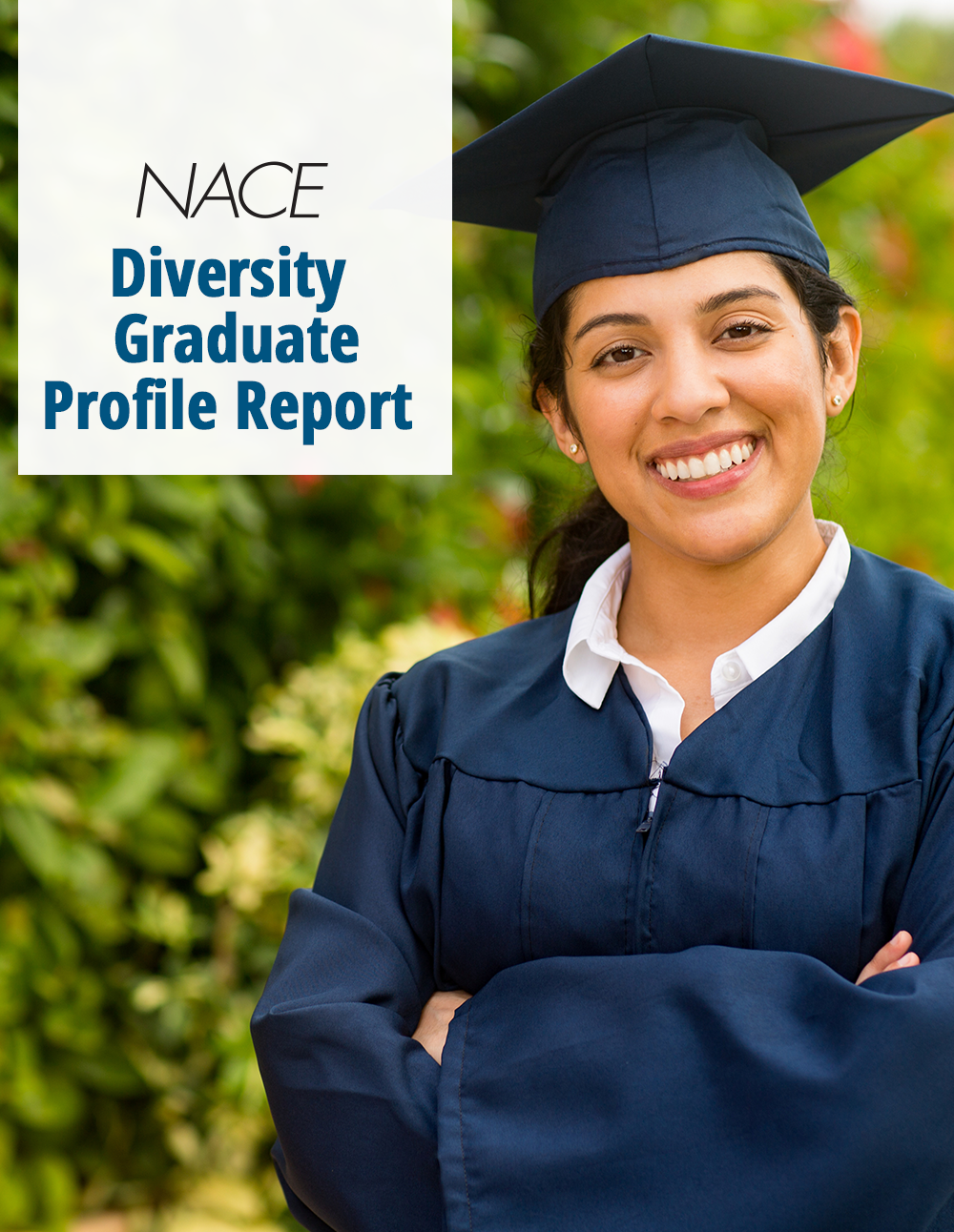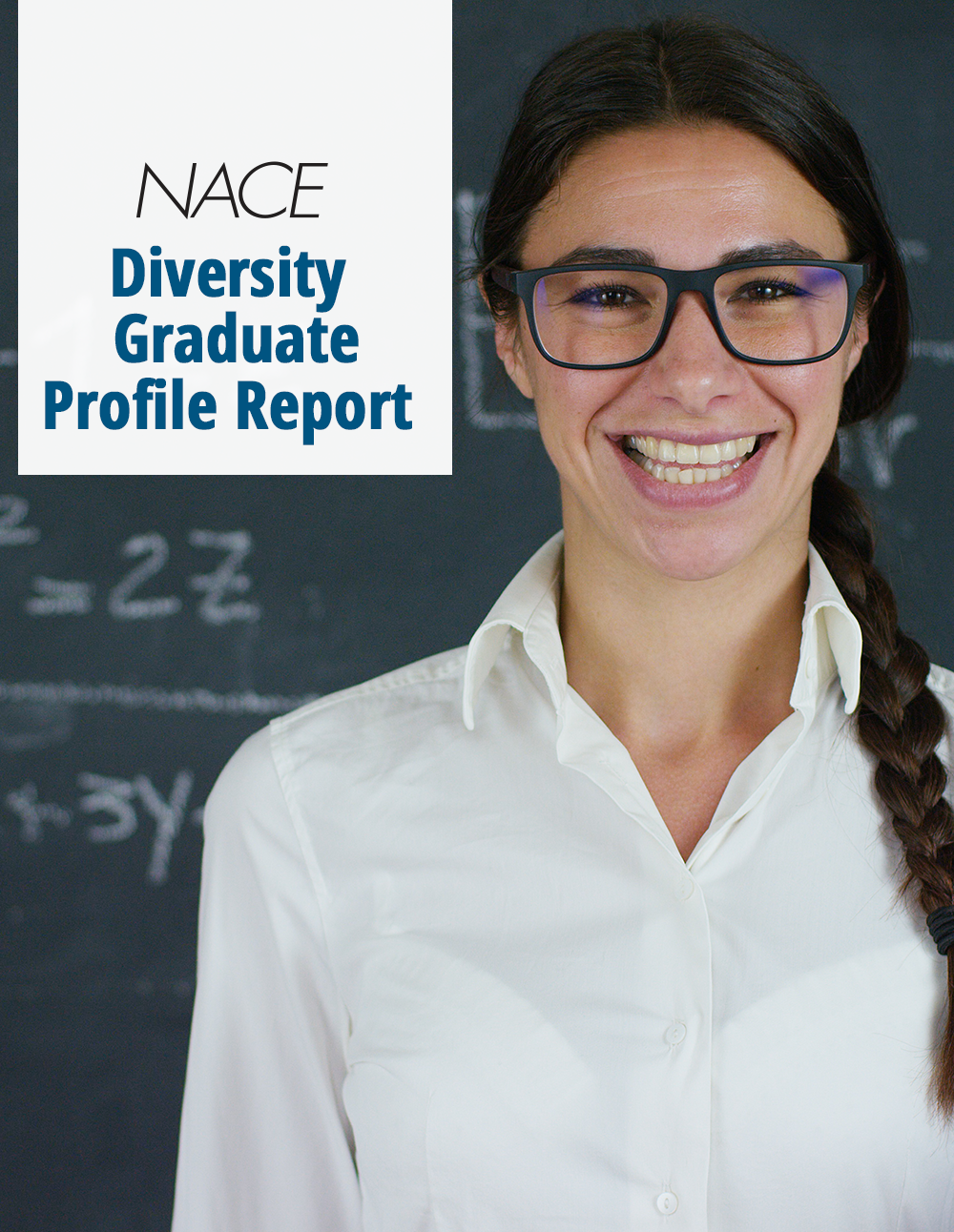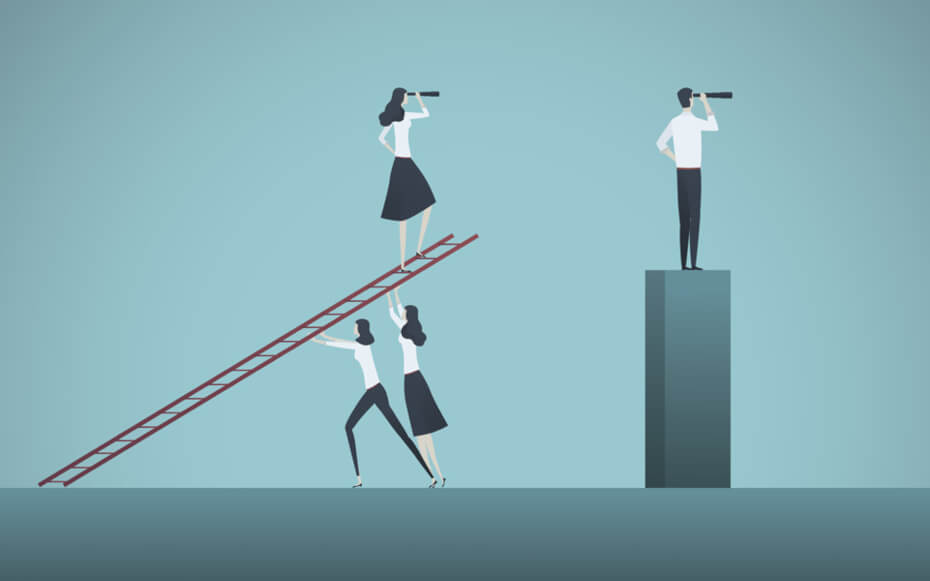NACE Journal, February 2020
Even with changes in laws and regulations, increased awareness, and years of progress, employment discrimination continues to be an issue. Underrepresented populations serve as the primary targets of various types of employment discrimination, such as harassment, micro-aggressions, and biased-based decision making.
As career services professionals, we have been key players in preparing students for the work force. New and emerging programs focusing on competencies, employment predictors, and building career-focused communities are preparing students in ways that our field has never done before. Our career services team recognized the importance of preparing our student population for a topic that is not commonly discussed, resulting in us implementing a platform for open dialogue about challenging topics surrounding diversity in the workplace. Although diversity and inclusion initiatives are not uncommon on college campuses, they are less common in the realm of career services. By researching the importance of diversity and inclusion initiatives and talking with students to further validate a need, we implemented diversity and inclusion-based programs through the “Diversity in the Workplace” series.
Modern Day Discrimination
Actions taken by the government, organizations, and individuals have resulted in the workplace being a more inclusive, equal, and equitable environment for underrepresented populations. As a result of legislation, e.g., Civil Rights Act (CRA), Equal Pay Act, Americans With Disabilities Act, and the creation of the Equal Employment Opportunity Commission (EEOC), overt acts of employment discrimination against women, people of color, people with disabilities, members of the LBGTQ+ community (not protected federally but protected at some state and local government levels), members of different religions, and several other protected populations have declined.
Additional Resources
“6 Surprising Ways to Ditch Disability Bias in the Workplace,” by Denise Brodey“Developing Women Leaders: Eliminating Bias, Providing Support,” NACE staff
Human Rights Campaign
Since the CRA passed, oversight has increased, policies have improved, and new generations have entered the work force. As a result, the work environment has drastically changed, creating new challenges to solve in addition to old ones. For example, companies are held more accountable and can receive serious sanctions if found guilty of employment discrimination. However, despite increased accountability, employment discrimination still occurs: In fact, there has been minimal difference in the number of charges reported to the EEOC over the past 20 years for employment discrimination. In 1999 there were 77,444 charges compared to 76,418 charges in 2018.1
There are multiple reasons to explain why employment discrimination is still an issue. One reason is that, historically, white, heteronormative males have been the majority in the workplace and dominated specific industries, resulting in a systemic culture that benefits some and hinders others.
An example of how this systemic culture can be discriminatory is sexual harassment. Although anyone can be the victim, women are more likely to experience sexual harassment. Moreover, the increased focus on sexual harassment resulting from the #MeToo movement has led to additional consequences: The Pew Research Center conducted a survey and found that half of survey participants believe the focus on sexual harassment has made it harder for men to know how to interact with women in the workplace. Additionally, nearly one-third of participants reported they believe women falsely claiming sexual harassment/assault is a major problem.2 In addition, the majority of those in positions of power are men. Only 5 percent of Fortune 500 CEOs and 38 percent of people in manager-level positions are women.3 As it is beneficial to network with people in power, the lack of women in such positions hinders the success of women in the workplace.
Sexual harassment continues to be an issue, but there are federal laws and regulations in place designed to prevent it. Other forms of employment discrimination do not have such support. For example, there is still a gap in legislation at the federal level to prohibit discrimination based on sexual orientation and gender identity. Some state and local governments have filled that gap with their own legislation, and some companies have created policies to combat such discrimination, but many have not. (For a list of states that have enacted protections, see the Human Rights Campaign website.)
Bias and negative social stereotypes also contribute to modern day discrimination. Examples of this can be seen when looking at underrepresented populations. While the Civil Rights Act was passed in 1964, significant discrepancies regarding underrepresented populations in leadership roles and high-income career fields, such as STEM industries, remain even a half century later. Despite a considerable amount of effort being made to increase women in STEM since the early 2000s, they still only made up 28 percent of the science and engineering work force in 2018, although women make up 47 percent of the total work force.4,5 However, two decades of intentional effort has resulted in progress, and as similar efforts continue to push forward, the future of the workplace becomes a more equal, inclusive, and diverse environment. In the meantime, however, what can we as career services professionals do to prevent students from experiencing employment discrimination or adding to an environment where it already exists?
Addressing Student Need
Our student population and campus culture were key drivers for the development of the career-focused diversity series. Florida Southern College is a small, private, liberal arts school located in central Florida. Our residential campus has an undergraduate population of 2,600-plus students, 40 percent of whom are from out of state. Demographically, nearly 78 percent of our students are white and 60 percent are female.6 Students on our campus are often exposed to the workplace environment early, as the institution offers a guaranteed internship program. We uphold this guarantee for any student who meets academic qualifications by connecting the student with the major’s internship coordinator; the coordinator is responsible for assisting the student in locating internship opportunities. Through this initiative, we integrate our students into the workplace environment well before their college graduation. As a result, we believe that a career-focused diversity series is critical to the development of our students and their success on the job.
Our size has also been a factor. Students at small institutions tend to have more opportunities to interact with professors, staff, and administrators, encouraging a strong sense of community. The connections we make with students through our office’s events, one-on-one appointments, classroom and student organization presentations, and campus community have allowed students to open up to our office staff about the real-world issues they are facing or concerned about at their internships and job sites. The “Diversity in the Workplace” series was a direct result of the challenges voiced by our students. As a career-focused office, we need our students to be aware that these challenges occur and learn how they can best advocate for themselves and others when faced with difficult workplace situations.
Creating the “Diversity in the Workplace” Series
The “Diversity in the Workplace” series consists of multiple programs that focus on modern day challenges in the workplace for underrepresented populations. Based on our conversations with students, we wanted to provide a platform for students to engage in open dialogue related to these challenges with their peers, faculty, staff, and employers. Each event is designed differently, allowing us to intentionally tailor to the needs of the topic and the students. Each program runs one to two hours and includes students, staff, faculty, upper administration, and employers. The topics we have focused on, and are considering for future events, involve discrimination related to gender, sexuality, race/ethnicity, disability, and religion.
Our hope for these events is to fill a gap in supporting the career readiness of our college students in terms of the global/intercultural fluency competency. To date, we have conducted two events and, as we are writing this, are in the planning stages for our third. The first , “Women in the Workplace,” was held in October 2018 and focused on gender discrimination. This was followed by “LGBTQ+ in the Workplace” in April 2019; it addressed sexual orientation and gender identity discrimination. Our next event, scheduled for November 2019, is “Multiculturalism in the Workplace,” which centers around race, cultures, and ethnicities.
Women in the Workplace
When we began planning for our series, we wanted to start with a topic that would strongly relate to our student population, resulting in us opening with “Women in the Workplace.” Women comprise the majority of our student population.
As a team, we came together to research a variety of issues women face within the workplace. We also reached out to student organizations, such as our Women’s Advocacy Club and Psychology Club, to learn about what our students were interested in regarding this topic. We also included faculty partners in these conversations to get their insight into the challenges they have faced and topics they were passionate or knowledgeable about.
Through this process, we narrowed down our topics to achievement and wage gap, intersectionality, women in STEM, sexual harassment and discrimination, women in business, women in education, male allies, work/life balance, and maternity leave policies. We then divided the topics among the team and began researching to create a guide for our facilitators. These guides highlighted talking points related to our nine main topics and served as a framework for our facilitators to engage in conversation with our students. Our facilitators—faculty, staff, and employers—led discussions related to the topics about which they were most passionate or knowledgeable.
Due to the number of topics, we chose a roundtable format for the event, allowing students to pick what they wanted to learn more about. Each roundtable discussion lasted for 15 minutes, and the students rotated through three topic areas during the designated time frame. All in all, we had 34 students and 14 facilitators (seven faculty members, five staff, and two employers) take part in the hour-and-one-half event. After the roundtable discussions, we led a reflective discussion and were pleased to hear that students enjoyed the event, learned new things, and had an opportunity that allowed them to have intentional discussions about these topics. Students also expressed interest in assisting with an event about sexuality discrimination, resulting in our “LGBTQ+ in the Workplace” event.
LGBTQ+ in the Workplace
As an office staff who all identify as heterosexual, we knew student input would be critical for this event. Our planning and conversations started with a partnership with our Allies Club, which supports members of the LGBTQ+ community on our campus. Through research and discussion, we found that students and other individuals wanted to learn more about the rights of an LGBTQ+ individual, how to express themselves within the workplace, and how to identify allies or supportive environments. For this event, we planned a 90-minute program with 30 minutes dedicated to keynote speakers, 50 minutes for a panel of employers who identify as a member of or ally to the LGBTQ+ community, and 10 minutes allocated for introduction and conclusion. Our keynote speakers were two attorneys; one represents individuals, and the other often represents companies or organizations on issues related to employment discrimination. We brought in these two attorneys to speak to the rights of the LGBTQ+ community on the local, state, and national level—important information as these often do not align with one another.
A panel, which included the two attorneys, a staff member, and four employer partners, followed the keynote. A member of our team moderated prepared questions and questions pulled from the audience. The purpose of the moderated panel portion of the event was to address questions our students might have felt uncomfortable asking themselves. The questions were developed with the input of members of the Allies Club. Following the panel, we opened the floor for our students to ask additional questions.
At this event, we were pleased to see more than 60 students along with several faculty, staff, upper administration, and community members come together to learn more about this topic and show support for the LGBTQ+ community. After this program, we surveyed students to determine if they found the event to be beneficial, learned ways they can foster an inclusive environment, understood challenges members of the LGBTQ+ community face, and were able to identify ways they could be a catalyst for positive change. The majority of respondents agreed, or strongly agreed, to the above inquiries. Additionally, 87 percent of students who responded to our survey believe these types of events addressing social issues in our society are needed on our campus. These results validate our reasoning for continuing the series.
Multiculturalism in the Workplace
The next event in our series, “Multiculturalism in the Workplace,” focuses on discriminatory issues related to race, ethnicity, and culture. Knowing the workplace is becoming more diverse, we want to provide an event in which students will discuss how they can foster an inclusive environment for a wide range of individuals.
We are still in the planning stages but expect to have a guest speaker to discuss topics related to racial discrimination and breakout activities for students to learn more about various topics. Topics under consideration for these breakout activities include dismantling stereotypes, discussing the idea of meeting a “quota” within the workplace, added pressure on individuals of color, and how to advocate for others within the workplace. As we continue to move forward with this event, we have partnered with our campus’ multicultural student center and are working on building relationships with student organizations to gain insight regarding challenges and concerns our students might be facing within the workplace.
The Future of the Series
As we move forward, we plan to poll students and speak with campus partners and employers to identify topics that will best support the needs of our campus population. Some that we have considered focus on discrimination issues related to disabilities, religion, international students, and political correctness in the workplace. We also plan to adapt the format for each event and have considered various formats, such as workshop-based, unconference, passive programs, and debate style, and are considering executing events that target specific student populations.
We will maintain strong collaborations with our campus partners and student organizations, as we know that, without them, we would be unsuccessful with the series. Additionally, we will progress as an office by growing personally and professionally as we continuously learn to best meet the needs of our students. Our office plans to accomplish this by continuing our research, professional development, and discussions with our students and campus partners. Overall, we want to ensure our students are prepared for all aspects of the work force. Our hope is that the “Diversity in the Workplace” series and our other events will do just that.
Endnotes
1 Equal Employment Opportunity Commission. EEOC Charge Statistics FY 1997 Through FY 2017. Retrieved from www.eeoc.gov/eeoc/statistics/enforcement/charges.cfm.
2 Graf, N. (2018, April 4). Sexual Harassment at Work in the Era of #MeToo. Pew Research Center. Retrieved from pewsocialtrends.org/2018/04/04/sexual-harassment-at-work-in-the-era-of-metoo/.
3 Pew Research Center. Fact Sheet: The Data on Women Leaders. Retrieved from pewsocialtrends.org/fact-sheet/the-data-on-women-leaders/.
4 National Girls Collaborative Project, (March 2018). The State of Girls and Women in STEM.Retried from ngcproject.org/sites/default/files/ngcp_the_state_of_girls_and_women_in_stem_2018a.pdf.
5 DeWolf, M. (2017, March 1). 12 Stats About Working Women. U.S. Department of Labor Blog. Retrieved from blog.dol.gov/2017/03/01/12-stats-about-working-women.
6 Florida Southern College. About Florida Southern College. Retrieved from www.flsouthern.edu/about/home.aspx.
